Excerpts from Jim Conrad's
Naturalist Newsletter
from the March 27, 2016 Newsletter issued from Hacienda Chichen Resort beside Chichén Itzá Ruins; limestone bedrock; elevation ~39m (~128ft), N20.675°, W88.569°; central Yucatán state, MÉXICO
SLENDER DWARF MORNING-GLORY
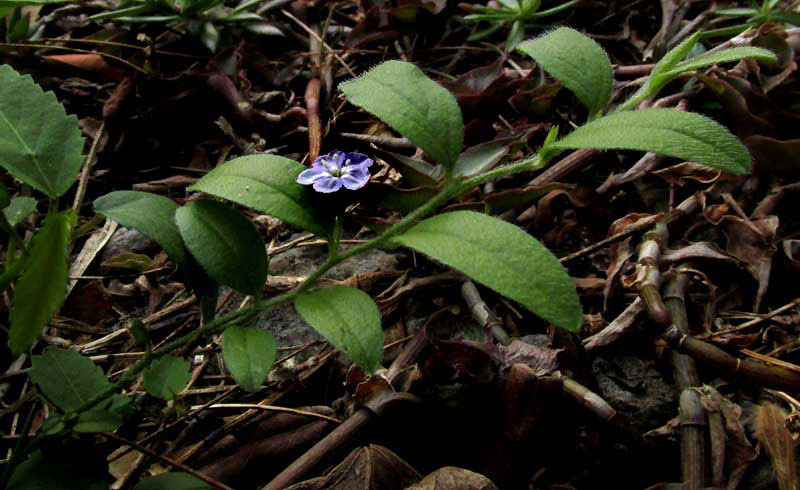
During the last month we've enjoyed three puddle-forming rains, which is unusual for the mid dry-season in this part of the world. The rains have suspended the usual uninterrupted march toward April and May's mind-numbing, strength-sapping dry heat, glare, and air acrid with smoke. Suddenly there's a little flush of greenness, of returning mosquitoes, and a softer feeling in the air.
So, when I went looking for herbs that might be emerging after these rains -- most herbs here die back during the dry season -- I found something in thin soil atop limestone bedrock outcropping on the floor of a shaded forest trail. At the top of this page you can see the small plant with its single pale blue flower only about 5mm across (1/5th inch) seemingly very out of place in such usually-baked soil in the dry season.
At first glance the tiny flower shows no special features to help with identification, as you can see closer up below:

As with the blossoms of many other species, the corolla is divided into five lobes and there are five stamens alternating with the lobes. However, something might be going on with the styles. The "standard blossom" botany students keep in their head has an ovary with one style tipped with a stigma, but here two or three very slender, crooked styles are emerging from amid the stamens. A side-view was taken, trying to figure things out, shown below:
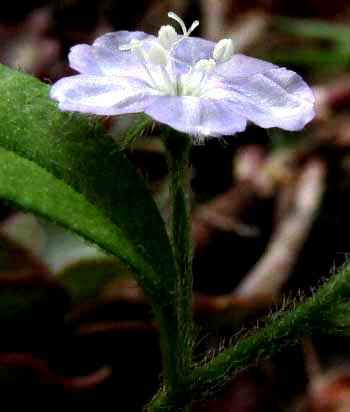
One style seems to be branching midway its length, so maybe we're seeing two styles, each of which branches halfway up. That's possible, because we've seen it in other flowers. Also, have you been noticing how the surfaces of this flower's corolla lobes appear creased or pleated? Flowers in the Morning-Glory Family tend to be folded during their bud stage so that when the corolla expands it's pleated where folding had taken place. And certain morning-glory flowers bear two styles branching halfway up... Though it's not a vine, it's a member of the Morning-Glory Family.
Last June in Río Lagartos on the Yucatan's northern coast, also in very thin soil atop outcropping limestone and also right after some rains, we found the Dwarf Bindweed, Evolvulus convolvuloides, which was very similar to our present plant, as you can confirm on our Dwarf Bindweed Page at www.backyardnature.net/mexnat/bindweed.htm
The genus Evolvulus is home to several species that don't twine as the vast majority of members of the Morning-Glory Family do, so here we have another Evolvulus species, one that's hairier, has different-shaped anthers, and normally produces only one flower per stem node instead of the two or more of the Dwarf Bindweed.
Our present species often is called the Slender Dwarf Morning-glory. It's EVOLVULUS ALSINOIDES, native to tropical America, occurring throughout Mexico, and is invasive throughout most of the rest of the Earth's humid tropics. Though often plants occurring on thin limestone turn out to be rare species specially adapted to quickly drying-out soil with high calcium content, the Slender Dwarf Morning-glory is considered a weed specializing in disturbed sites such as roadsides, pastures and agricultural fields. It's known to flower all during the year.
Despite its weed status, it's such a small plant -- only reaching about 50cm (20 inches) -- that farmers don't consider it as too troublesome. Whether it's a weedy wildflower or a flowery weed, this week it was good to make its acquaintance on that shadowy little trail through the woods.
entry dated June 10, 2022, issued from near Tequisquiapan, elevation about 1,900m (6200 ft), Querétaro state, MÉXICO
SAME SPECIES, DIFFERENT LOOK
Now it's the end of a very long, dry dry-season in upland, semiarid central Mexico and when, in a very overgrazed, thin-soiled, sun-scorched and eroded rocky field the plant pictured below turned up, I didn't recognize it as the same species as is featured above:
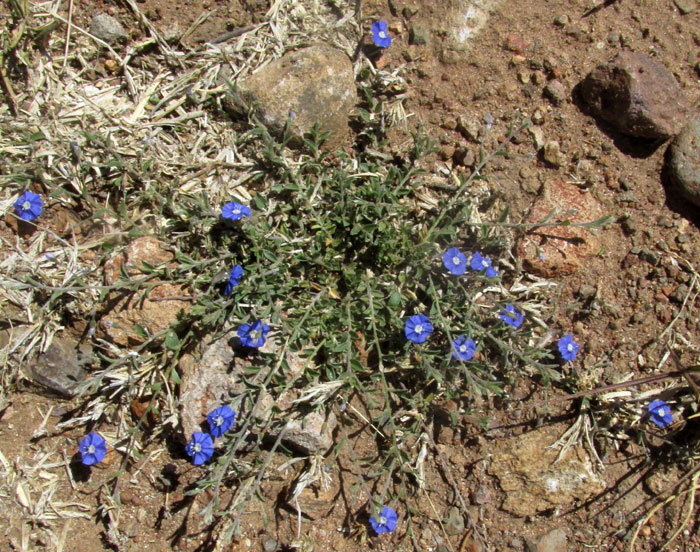
But, the flower structure is the same:
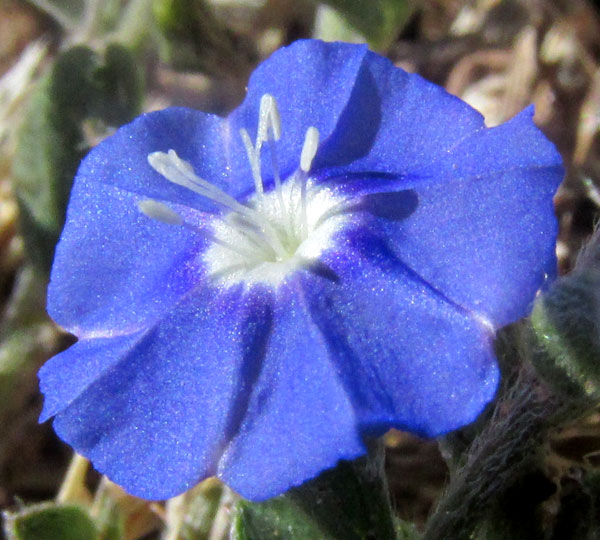
And the hairy leaves are close enough:
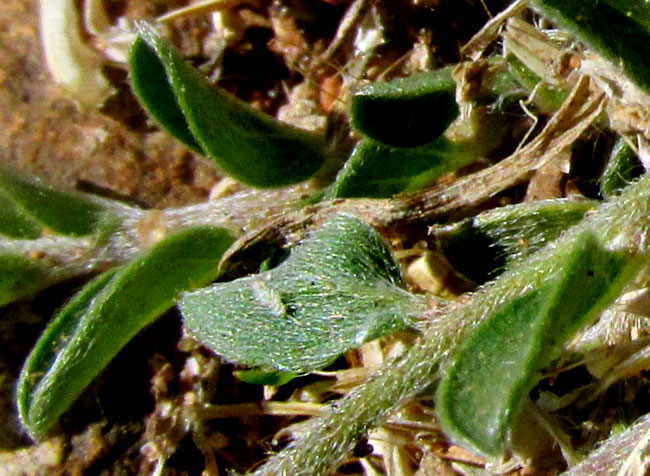
But, it's known that plants may vary according to their growing conditions, and that this species is particularly variable in its appearance in disturbed places across the world. Still, it was a surprise.